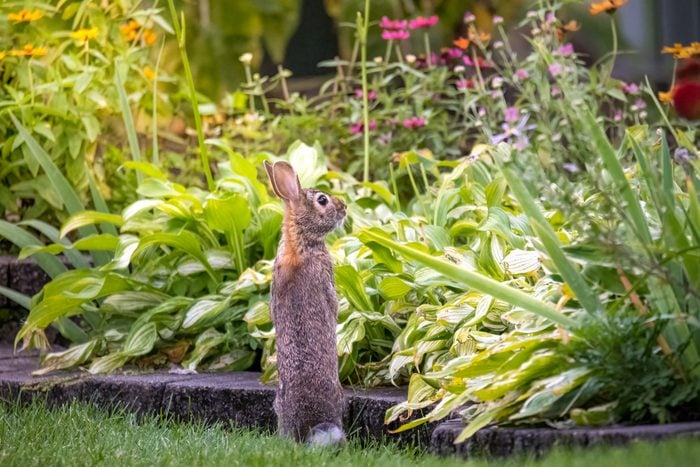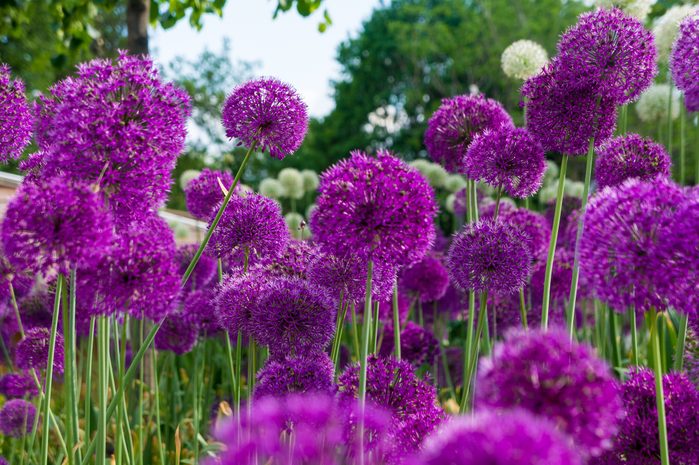
Allium
Allium is a genus of plants that includes many ornament flowers, plus onions and chives. Ornamental alliums range in size from a foot to several feet tall and bloom in spring to mid-summer. Most are hardy in U.S. Department of Agriculture Hardiness Zones 3 – 9. For a border plant, try Allium ‘Millenium‘ (yes, it is missing an ‘n’) which slowly spreads. For a tall accent flower, consider Allium ‘Globemaster.’ Alliums in general prefer full sun and well-draining soil. Most ornament alliums are purchased as bulbs and planted in the fall and rabbits will avoid them.
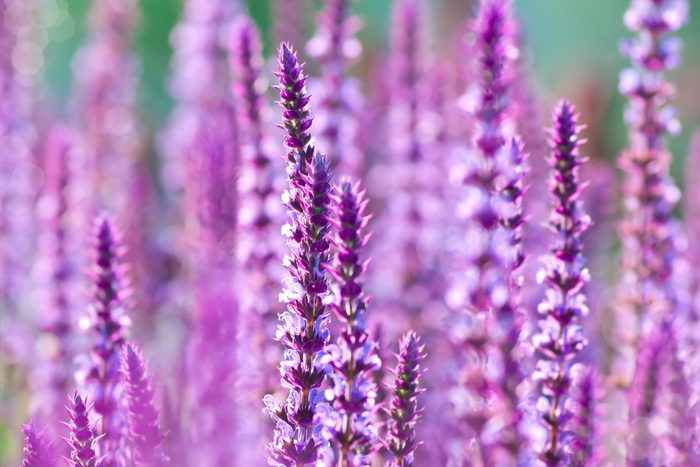
Salvia
Salvia is a big genus of plants that includes annual flowers, perennial flowers and even the herb sage. Most gardeners can find a place for salvia in their garden. Annual flowers do well in containers and attract pollinators, including hummingbirds, but rabbits don’t eat them. Perennial salvias, such as Salvia ‘May Night‘ are hardy in USDA zones 5 – 9. Most prefer full sun and good drainage. Flower colors range from deep purple to pinks and even red. To keep salvia flowering, cut back faded blooms.
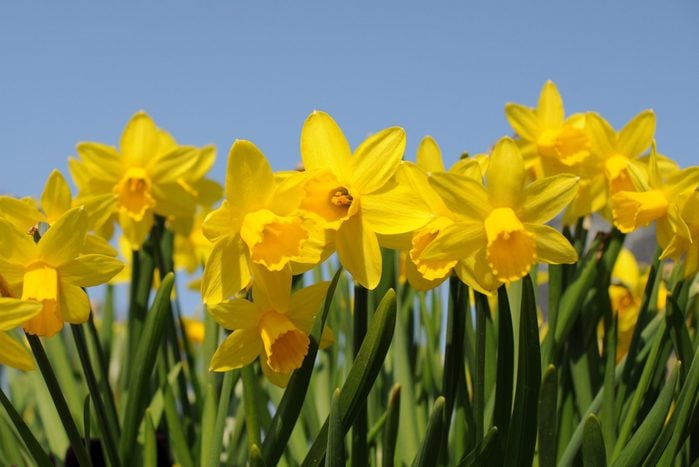
Daffodil
While rabbits may mow down your tulips, they’ll leave your daffodils alone. Maybe they don’t like that sap you’ll discover if you cut your daffodils to enjoy indoors? Daffodils are all in the Narcissus genus of plants and come in a variety of types. Some, such as Narcissus tazetta, are only hardy in USDA zones 8 – 10. However, there are thousands of other varieties of daffodils, hardy in USDA zones 4 – 8. Plant the bulbs in the fall for spring bloom. Many daffodils will naturalize and spread from year to year. P.S. You can also consider these handy rabbit repellent products to protect your garden from these adorable creatures.
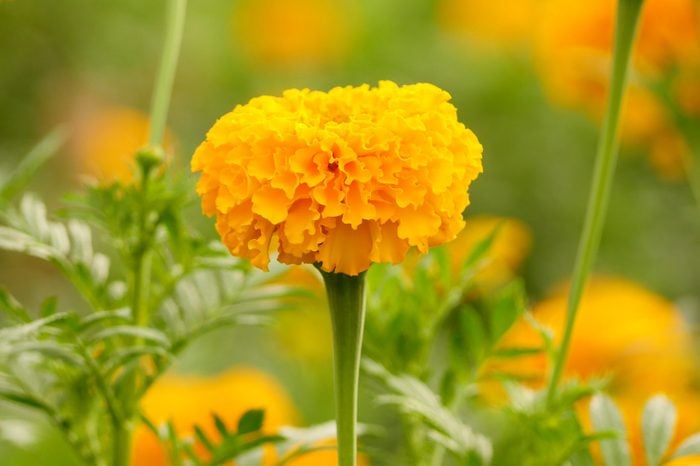
Marigold
Marigold, an annual flower, has a distinctive smell and rabbits will leave it alone. Marigolds vary in size from six inches to several feet and come in colors ranging from yellow to orange and even white. They are easy to grow from seed sown directly in the garden after all threat of frost has passed in the spring. They bloom from mid-summer all the way to fall and are often grown around the vegetable garden to keep pests away.
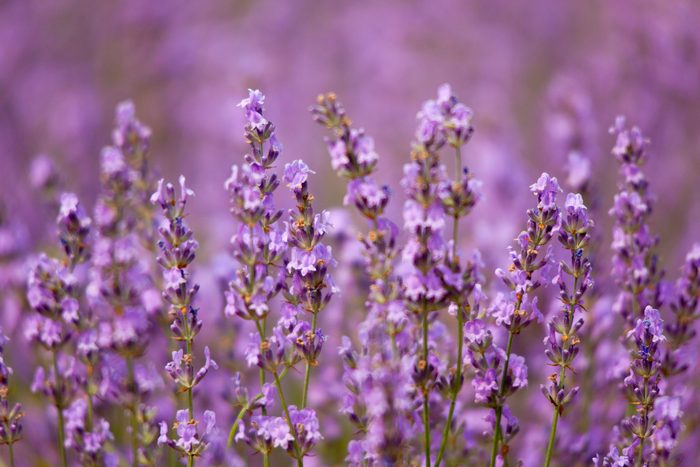
Lavender
Lavender has a wonderful scent and perhaps that’s what keeps the rabbits from eating it. Most lavender grows as a perennial in USDA zones 5 – 8. To keep it looking its best, it does require a bit of pruning, but the reward for growing lavender is flowers that attract many pollinators and plants not eaten by rabbits. Lavender prefers sunny conditions and is drought-tolerant. In fact, overwatering can kill lavender, so plant it where it isn’t likely to be drenched by lawn sprinklers.
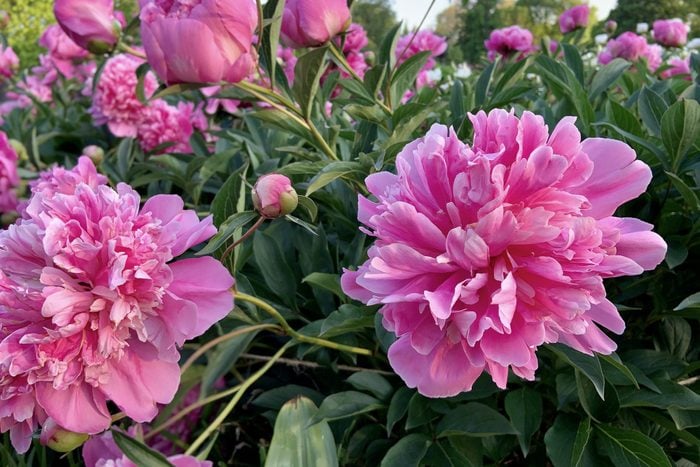
Peony
Peony foliage emerges early in the spring when not much else is growing, but rabbits still leave it alone. Peonies are perennials, hardy in USDA zones 2 – 8. They are easy to grow and produce their blooms in mid-spring in shades ranging from white to pink to dark magenta. They are also a long-lasting perennial requiring minimal care. They prefer full-sun and well-drained soil in most zones, but in southern states, they like a little shade in the afternoon.
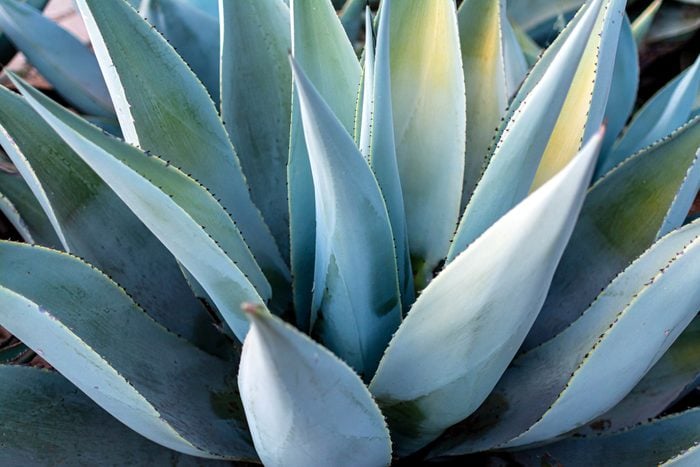
Agave
For those who live in warmer climates, Agave is a plant rabbits won’t eat, not because of the spiky leaves, which look menacing, but because agave is poisonous to them. Agave is often thought of as a desert plant and most are hardy in USDA zones 8 – 10, but there are some agaves that can tolerate colder climates. They vary in size from a foot to some that get 20 feet tall and 10 feet wide. Most agaves prefer dry, sandy soil and full sun.
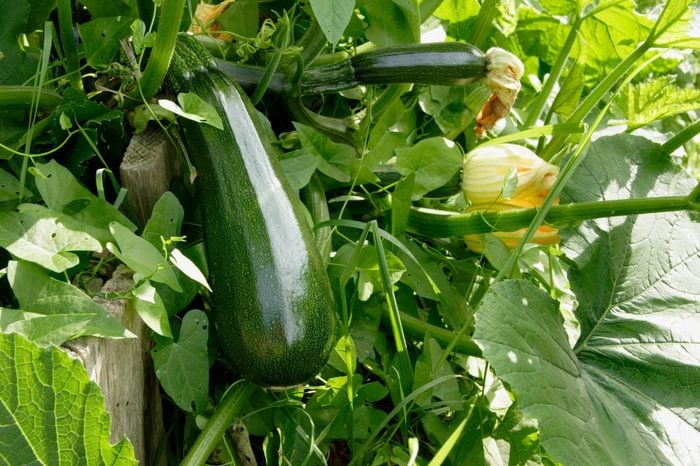
Squash
In the vegetable garden, rabbits avoid plants in the squash family, which includes summer squash and cucumbers. If you look closely at your squash plants, you’ll find the leaves covered in little prickles, which is probably what keeps rabbits from eating them. Squash is easy to grow in most gardens, given enough sun and good rich soil. The rabbits also won’t eat the actual fruit of these plants, so harvest regularly, and they’ll keep producing, rabbit-free.
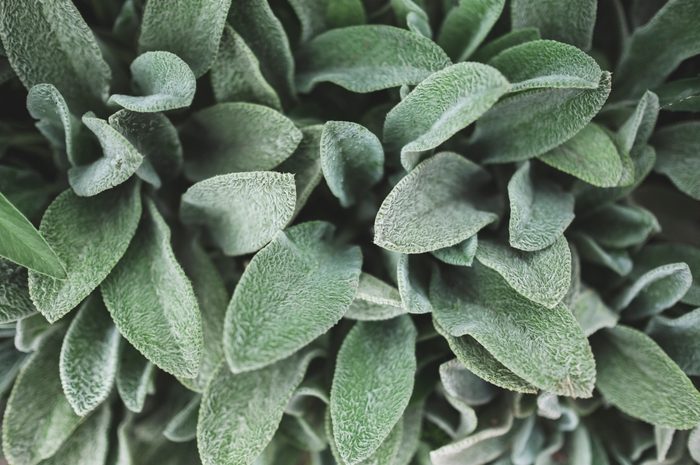
Lamb’s Ear
Lamb’s ear, Stachys byzantina, is a perennial flower with soft, fuzzy grayish-green leaves. It is hardy in USDA zones 4 – 8 and likes sunny, well-drained locations. Pollinators are attracted to its flowers which grow on tall spikes. Many gardeners prefer to cut the flowers off before they set seed and use this plant as a ground cover. Although the leaves are soft as a rabbit’s ear, rabbits don’t eat this plant, which is in the mint family.
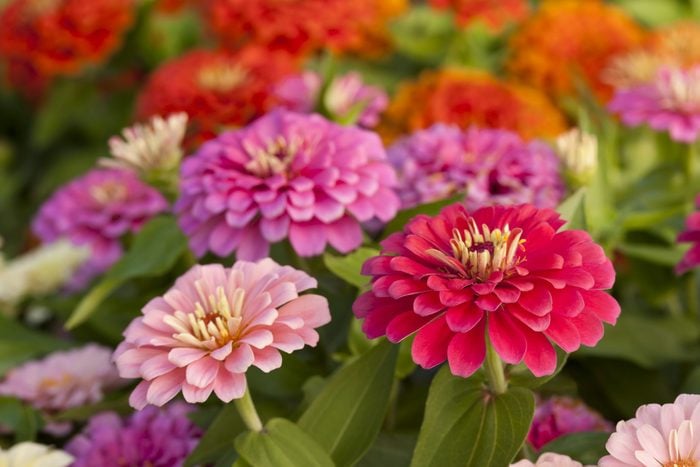
Zinnia
Zinnia is another great annual flower on the list of plants that rabbits won’t eat. There are many varieties and sizes of zinnias, ranging from the smaller Profusion zinnias to the quite tall annuals like ‘State Fair Mix,’ which can have blooms nearly five inches across. Most zinnias grow best in full sun from seeds sown directly in the garden where they will grow. Zinnias also attract pollinators, including bees and butterflies.

